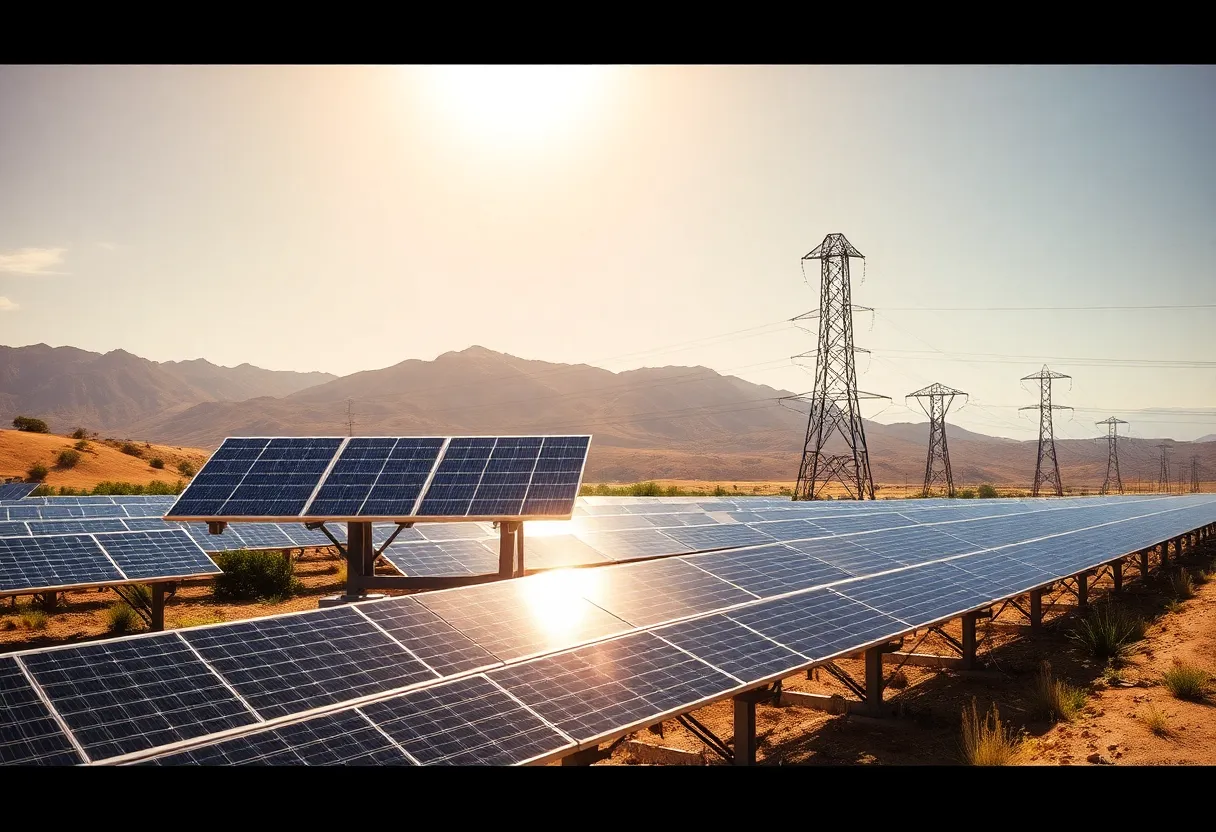News Summary
California is confronting significant cuts to its energy assistance programs amid a budget shortfall under Governor Newsom’s administration. Proposed reductions could undermine the state’s clean energy initiatives, particularly affecting crucial programs like Demand Side Grid Support (DSGS) and Distributed Electricity Backup Assets (DEBA). Advocates warn that these cuts could jeopardize progress in grid reliability and climate goals. The implications may extend to low-income energy assistance programs as federal negotiations unfold. As the state prepares for crucial budget decisions, the future of California’s energy landscape hangs in the balance.
California is facing significant potential cuts to its energy assistance programs as Governor Gavin Newsom’s administration grapples with a budget shortfall, which could undermine the state’s efforts to enhance energy resources and grid reliability during emergencies. The proposed reductions have sparked concerns among advocates, who warn that cutting funding could jeopardize progress made in California’s clean energy initiatives and its status as a reliable partner for energy companies.
The budget proposal suggests the elimination of all funding from the Greenhouse Gas Reduction Fund for key energy programs in future years, particularly the Demand Side Grid Support (DSGS) and Distributed Electricity Backup Assets (DEBA) programs. These programs are designed to improve grid reliability and prevent blackouts, which are critical as California prepares for the upcoming summer energy demands. The state plans to allocate only $50 million for DEBA from climate bond funds, a sharp decline from the original allocation of $200 million.
Newsom’s office has stated that California is equipped to manage summer energy requirements, although it remains vigilant about ongoing risks to energy stability. The original budget set forth a plan featuring $75 million for DSGS and $200 million for DEBA for fiscal years 2025-2026, with additional funding sources planned for backfill. However, with the new proposal, these once-promising initiatives face the threat of losing their financial support, contingent on cap and trade agreement modifications.
Advocates, including representatives from the California Solar & Storage Association (CALSSA), have voiced their opposition to these proposed cuts, emphasizing the programs’ critical role in maintaining grid reliability and achieving the state’s climate goals. CALSSA reports that the DSGS program has already demonstrated success, boasting over 500 megawatts of enrolled capacity and participation from more than 260,000 customers. In contrast, the DEBA program, while intended to facilitate the introduction of new energy resources, has encountered implementation delays, further highlighting the need for continued funding.
The proposed budget cuts could also have broader implications, as ongoing federal budget negotiations threaten energy assistance programs for low-income households, including the Low-Income Home Energy Assistance Program (LIHEAP). Although California has received substantial federal funding for LIHEAP, the release of remaining funds is currently stalled due to Congress’s budget negotiations.
Despite recent reports of a significant increase in California’s installed battery capacity, doubts linger regarding the feasibility of relying solely on utility-scale batteries for sustained energy needs. In response to the budget cuts, various environmental groups are advocating for a multibillion-dollar climate resilience bond to help preserve funding for climate initiatives and counterbalance the projected reductions.
Ongoing negotiations for potential bond measures are currently underway, with a June 27 deadline looming to include various proposals on the November ballot. With state leaders required to finalize the annual budget by July 1, they are faced with the complex task of balancing financial constraints against the necessity of honoring California’s climate commitments while addressing energy program funding.
As the state approaches crucial deadlines for budget decisions, the stakes are high, not just for immediate energy assistance programs, but for the long-term vision of California’s drive towards sustainable energy practices and resilience against climate change. The outcome of these budget discussions will have lasting ramifications for the state’s energy landscape and its ability to effectively respond to mounting environmental challenges.
Deeper Dive: News & Info About This Topic
- Los Angeles Times: DOE Cuts Target California
- Wikipedia: California
- Canary Media: California Budget Cuts
- Google Search: California budget cuts energy
- RTO Insider: Newsom’s Climate Measures
- Google Scholar: California energy assistance programs
- The Hill: California Climate Change Resilience
- Encyclopedia Britannica: California climate change

Author: STAFF HERE BEVERLY HILLS WRITER
The Beverly Hills Staff Writer represents the experienced team at HEREBeverlyHills.com, your go-to source for actionable local news and information in Beverly Hills, Los Angeles County, and beyond. Specializing in "news you can use," we cover essential topics like product reviews for personal and business needs, local business directories, politics, real estate trends, neighborhood insights, and state news affecting the area—with deep expertise drawn from years of dedicated reporting and strong community input, including local press releases and business updates. We deliver top reporting on high-value events such as the Rodeo Drive Concours d'Elegance, the Beverly Hills artSHOW, Concerts on Canon, and holiday celebrations throughout the city. Our coverage extends to key organizations like the Beverly Hills Chamber of Commerce and Visit Beverly Hills, plus leading businesses in luxury fashion, hospitality, and entertainment that drive the local economy. As part of the broader HERE network, including HERELosAngeles.com, HERESantaAna.com, HEREHuntingtonBeach.com, and HERECostaMesa.com, we provide comprehensive, credible insights into Southern California's dynamic landscape.





